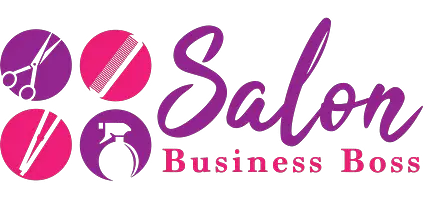Operating a successful salon business requires more than just providing top-notch services; it demands a thorough understanding of financial management. Salon expenses play a crucial role in determining the profitability and sustainability of the business.
Salon expenses include personnel costs, rent/utilities, inventory, marketing, equipment, insurance, and customer amenities. Managing these factors effectively is crucial for a successful and profitable salon business. By striking a balance between quality services and cost-efficiency, salon owners can ensure long-term sustainability and growth in a competitive market.
1. Personnel Costs:
Personnel costs represent one of the most substantial expenses for salon owners. A team of skilled and well-trained staff is indispensable for delivering exceptional services and building a loyal customer base. However, compensating employees fairly can significantly impact the salon’s bottom line, necessitating a delicate balance between employee satisfaction and profitability.
To manage personnel costs effectively, salon owners should closely monitor labor expenses. This involves tracking staff hours, wages, and benefits to ensure that compensation aligns with the salon’s budget. Implementing staff scheduling software can optimize staff allocation, reducing idle time and overtime costs.
Investing in training and development programs is equally important. Not only does this enhance the skill set of employees, but it also boosts their job satisfaction and dedication to the salon. Satisfied employees are more likely to stay long-term, reducing turnover and associated recruitment expenses.
Fostering a positive work environment can lead to increased employee productivity and engagement. Encouraging teamwork, recognizing achievements, and soliciting feedback from staff all contribute to a happier and more motivated workforce.
Managing personnel costs involves striking a balance between recognizing the value of talented employees and implementing cost-saving measures. By focusing on employee satisfaction and skill enhancement, salon owners can create a thriving team that provides top-notch services while maintaining financial stability.
2. Rent and Utilities:
The choice of a salon’s location significantly impacts its success, but it also plays a crucial role in determining overhead costs, such as rent and utilities. Securing a prime location with high foot traffic and visibility often comes at a premium price, while a less popular location might offer cost savings but potentially compromise client accessibility.
Salon owners must carefully weigh the pros and cons of different locations and consider the target clientele they aim to attract. A balance between accessibility, visibility, and affordability is key to finding the optimal location for the salon.
Once the location is established, implementing energy-efficient practices can help reduce utility expenses. Simple measures like installing LED lighting, using programmable thermostats, and maintaining equipment in good condition can lead to significant savings on electricity, water, and heating costs.
Negotiating favorable lease terms is another strategy to control rent expenses. Salon owners should be prepared to negotiate the lease duration, rental rates, and any potential rent increases to secure the best deal possible.
Overall, managing rent and utility expenses requires strategic decision-making and a focus on optimizing resources. A well-chosen location with cost-saving measures can help salon owners minimize overhead costs and improve the salon’s overall financial health.
3. Inventory Management:

Inventory management is a critical aspect of running a successful salon business. As salons heavily rely on various products and supplies to deliver services, effective management can control expenses associated with product wastage, spoilage, and overstocking.
Implementing an inventory tracking system is the first step towards efficient management. Tracking software allows salon owners to monitor product levels, reorder points, and usage patterns. By having real-time insights into inventory, salon owners can avoid stockouts and prevent over-purchasing, ultimately reducing costs.
Setting par levels is another essential strategy. Par levels represent the minimum quantity of each product that should be available at any given time. By establishing these levels based on historical data and demand forecasts, salon owners can ensure that they always have sufficient stock without tying up excess capital in inventory.
Building strong vendor relationships can also yield cost-saving benefits. Negotiating favorable terms, bulk discounts, and timely deliveries can all contribute to better inventory management. Additionally, keeping an open line of communication with suppliers can help salon owners stay informed about product promotions and special offers, leading to potential cost savings.
Regularly conducting inventory audits and reviewing product expiration dates can prevent spoilage and waste. Products nearing expiration should be prioritized for use, and discontinued items should be cleared from the inventory to avoid deadstock.
Overall, effective inventory management maximizes the availability of essential products while minimizing unnecessary costs, ensuring a smooth and cost-efficient operation for the salon.
Read more about: Investing in Beauty: A Look at Salon Cost Inventory
4. Marketing and Advertising:
Marketing and advertising play a crucial role in attracting and retaining customers for a salon business. However, allocating a significant portion of the budget to these activities can be financially challenging for salon owners.
In the digital age, cost-effective marketing strategies are readily available. Embracing social media platforms like Facebook, Instagram, and Pinterest allows salons to connect with potential customers directly. Engaging content, high-quality visuals, and interactive posts can help build a loyal online community and generate word-of-mouth referrals.
Search Engine Optimization (SEO) is another cost-effective way to increase the salon’s online visibility. By optimizing the salon’s website and online content with relevant keywords, the salon can rank higher in search engine results, attracting more organic traffic without the need for expensive paid advertisements.
Email marketing is a powerful tool to engage with existing customers and promote special offers or events. By collecting customer emails and sending personalized, targeted messages, salons can nurture customer relationships and encourage repeat visits.
Collaborating with local influencers or partnering with other businesses can be a mutually beneficial strategy for marketing. This allows the salon to tap into a broader audience without significant financial investments.
Measuring the effectiveness of marketing efforts is essential. Analyzing data from digital platforms, tracking coupon codes, and monitoring website traffic can provide valuable insights into the success of different marketing initiatives. This data-driven approach helps salon owners focus their resources on the most impactful strategies.
5. Equipment and Maintenance:
Investing in high-quality salon equipment is a crucial aspect of delivering top-notch services to customers. However, salon owners often face significant upfront costs when purchasing the necessary equipment. To manage these expenses effectively, a strategic approach is essential.
Firstly, salon owners should prioritize equipment purchases based on necessity. Identifying the must-have equipment ensures that capital is allocated wisely, focusing on items that directly contribute to service quality and customer satisfaction. Essential equipment may include styling chairs, hair dryers, shampoo units, and specialized tools for various services.
Durability is another critical factor to consider. Investing in high-quality, durable equipment may be costlier upfront, but it can lead to long-term cost savings. Durable equipment is less likely to require frequent repairs or replacements, reducing ongoing maintenance expenses.
Regular maintenance and servicing are essential for extending the lifespan of salon equipment. Creating a maintenance schedule and sticking to it can prevent minor issues from escalating into major problems. Routine maintenance not only ensures the equipment functions optimally but also helps identify potential safety hazards, reducing the risk of accidents or injuries.
Salon owners can also explore leasing or financing options for expensive equipment. Leasing allows for manageable monthly payments, spreading the cost over time, while financing provides access to high-quality equipment without a large upfront investment.
By adopting a proactive and strategic approach to equipment management, salon owners can provide exceptional services while effectively managing expenses associated with equipment purchasing and maintenance.
6. Insurance and Licenses:
Safeguarding the salon business against unexpected events and complying with legal requirements are crucial for long-term stability and success. Salon owners must invest in the right insurance coverage and obtain necessary licenses and permits.
General liability insurance protects the salon from third-party claims related to property damage or bodily injury that may occur on the premises. Worker’s compensation insurance is essential for covering medical expenses and lost wages in case of employee injuries or illnesses sustained during work. Property insurance safeguards the salon’s physical assets, including equipment and inventory, against theft, fire, or other damages.
Securing the required licenses and permits is vital to operate the salon legally. The specific licenses may vary depending on the location and the services offered, such as cosmetology licenses or business operation permits. Salon owners should thoroughly research and understand the local regulations and compliance requirements to avoid fines or legal issues.
While insurance and license costs may represent an ongoing expense, the protection and compliance they provide are invaluable for the salon’s reputation, financial security, and continued operation.
7. Professional Development and Training:

The salon industry is ever-evolving, with new trends, techniques, and products constantly emerging. To stay competitive and deliver cutting-edge services, investing in ongoing professional development and training for salon staff is essential.
Continuing education not only keeps staff updated on the latest industry trends but also enhances their skills and expertise. As the beauty industry evolves, clients’ demands and expectations change accordingly. By staying ahead of these shifts through training, salon professionals can provide innovative and high-quality services, ensuring client satisfaction and loyalty.
Professional development can encompass various aspects, including attending workshops, seminars, and industry conferences, as well as participating in online courses and certifications. Training opportunities can cover a wide range of subjects, from new hairstyling techniques to advanced skincare procedures and makeup application.
Ongoing training contributes to a motivated and engaged workforce. When salon staff feels valued and invested in, their job satisfaction and performance improve. A skilled and satisfied team is more likely to go the extra mile for clients, resulting in positive word-of-mouth and repeat business.
While professional development might involve initial expenses, its long-term benefits significantly outweigh the costs. Improved service quality, enhanced staff expertise, and increased customer satisfaction all contribute to the salon’s reputation and financial success.
Read more about: Profit Margin on Hair Salons: Insights and Challenges
8. Customer Amenities:
Creating a positive and comfortable experience for customers is essential for any successful salon business. Providing amenities like complimentary beverages, magazines, and Wi-Fi enhances the overall customer experience, encouraging repeat visits and positive reviews.
Salon owners should carefully evaluate the impact of customer amenities on the salon’s brand image and customer satisfaction. Simple amenities like beverages and magazines create a welcoming environment, making clients feel relaxed and valued during their visit. Free Wi-Fi is especially appreciated in today’s digital age, allowing clients to stay connected and entertained while getting their hair or nails done.
While offering customer amenities incurs expenses, salon owners should weigh their importance against the potential benefits. Certain amenities may be more cost-effective and easier to manage, such as offering water and coffee rather than a full refreshment menu.
Engaging with customers and gathering feedback is crucial to understanding which amenities matter most to them. Through customer surveys or direct conversations, salon owners can identify preferred amenities and prioritize them accordingly.
A well-thought-out approach to customer amenities demonstrates that the salon values its clients’ comfort and enjoyment. While controlling expenses is important, the investment in customer amenities contributes to customer loyalty, positive reviews, and word-of-mouth referrals, all of which play a significant role in the salon’s long-term success.
Conclusion:
Effectively managing salon expenses is a critical aspect of running a successful and profitable business. By diligently monitoring personnel costs, rent, utilities, inventory, marketing, equipment, insurance, and other financial aspects, salon owners can strike a balance between quality service and affordability. Embracing cost-effective strategies and staying attuned to customer preferences can help salons thrive in a competitive market, ensuring long-term sustainability and growth.
Frequently Asked Questions

1. What types of insurance are essential for a salon business?
General liability insurance, worker’s compensation, and property insurance are essential to protect the salon against unforeseen events.
2. What licenses and permits are required to operate a salon legally?
Salon owners need to obtain the necessary local licenses and permits to comply with legal regulations.
3. Why is investing in staff professional development important for a salon business?
Ongoing training and development help salon staff stay updated with industry trends and improve service quality, leading to higher customer satisfaction.
To learn more on how to start you own salon checkout my startup documents here.
Please note that the contents of this blog are for informational and entertainment purposes only and should not be construed as legal advice. Any action taken based on the information provided in this blog is solely at your own risk. Additionally, all images used in this blog are generated under the CC0 license of Creative Commons, which means they are free to use for any purpose without attribution.

About the author. Entrepreneur and Salon Business Fan.
Hi! I am Shawn and I am a happy individual who happens to be an entrepreneur. I have owned several types of businesses in my life from a coffee shop to an import and export business to an online review business plus a few more and now I create online salon business resources for those interested in starting new ventures. It’s demanding work but I love it. I do it for those passionate about their business and their goals. That’s why when I meet a salon business owner, I see myself. I know how hard the struggle is to retain clients, find good employees and keep the business growing all while trying to stay competitive.
That’s why I created Salon Business Boss: I want to help salon business owners like you build a thriving business that brings you endless joy and supports your ideal lifestyle.

